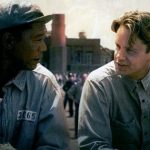🎬 Beasts of No Nation (2015): The Brutality of War

Beasts of No Nation is a haunting war drama directed by Cary Joji Fukunaga that brings to life the visceral and unflinching journey of a child soldier caught in the brutalities of a West African civil war. Adapted from Uzodinma Iweala’s novel, this film presents a raw, powerful exploration of innocence lost amid the ravages of conflict, shining a light on the harrowing experiences of children forced into violence.
Plot Overview
The story follows Agu, a young boy whose life is violently disrupted when his family is slaughtered and his village is destroyed by civil war. Orphaned and desperate, Agu is captured by a militant rebel group led by the charismatic but ruthless Commandant. Under his influence, Agu is trained as a child soldier, thrust into a dark world of warfare and exploitation, facing the horrific costs of survival. As Agu becomes entrenched in this chaotic life, he grapples with the loss of his innocence and humanity.
Key Themes

- Loss of Innocence: The film poignantly captures Agu’s transformation from an innocent child to a hardened soldier, highlighting the irreversible impact of war on young lives.
- Corruption of Power: Commandant, as a father figure and oppressor, represents the corrupting influence of unchecked power, exploiting vulnerable children for personal gain and manipulating them into carrying out horrific acts.
- Survival and Resilience: Agu’s journey is a testament to human resilience, showing his internal struggle to retain his sense of self amid brutal violence and dehumanization.
Character Analysis
- Agu (Abraham Attah): Through Agu’s journey, the film confronts the devastation of war and the resilience of the human spirit. His internal monologues reveal his torment and longing for normalcy, adding emotional depth to his character.
- The Commandant (Idris Elba): A commanding and complex figure, the Commandant serves as both a fatherly protector and an oppressive leader, whose influence over Agu and other children oscillates between manipulative guidance and violent exploitation. Elba’s performance captures the Commandant’s layered cruelty and charisma.
Visual and Cinematic Techniques
Beasts of No Nation uses powerful, striking visuals to communicate the horror and surreal beauty of war-torn landscapes. Fukunaga’s direction includes long, sweeping shots of the jungle and desolate towns, which create a haunting backdrop that mirrors Agu’s psychological descent. The film’s color palette shifts from vibrant greens to muted, lifeless hues as Agu’s journey grows darker, symbolizing his loss of innocence.
The close-up shots of Agu’s face, often streaked with dirt and tears, convey his inner turmoil and trauma without needing words. Fukunaga also utilizes silence and natural soundscapes to create an atmosphere of tension, with moments of chaos followed by eerie calm, underscoring the unpredictability of war.
Soundtrack and Sound Design

The soundtrack by Dan Romer, infused with traditional African beats and ominous orchestral undertones, enhances the film’s emotional depth. The sound design is meticulous, from the echoes of gunfire to the unsettling quiet moments that follow, pulling viewers into the immediacy of Agu’s experiences.
Reception and Impact
Upon its release, Beasts of No Nation was acclaimed for its powerful storytelling, poignant performances, and unflinching portrayal of the brutality of war. The film received praise for raising awareness about child soldiers and the effects of civil conflict on youth, and it won several awards, including the Marcello Mastroianni Award for Best Young Actor for Abraham Attah at the Venice Film Festival.
Perfect For Fans Who Enjoyed:
- Blood Diamond – For its exploration of exploitation and survival in conflict zones.
- City of God – For its raw portrayal of youth affected by violence.
- Hotel Rwanda – For its insight into the human toll of war and civil strife.
In sum, Beasts of No Nation is a powerful and moving examination of the human cost of war, particularly on children. With its intense performances, stunning cinematography, and emotional gravity, this film sheds light on the resilience required to survive unimaginable horrors, leaving audiences both heartbroken and deeply moved.











